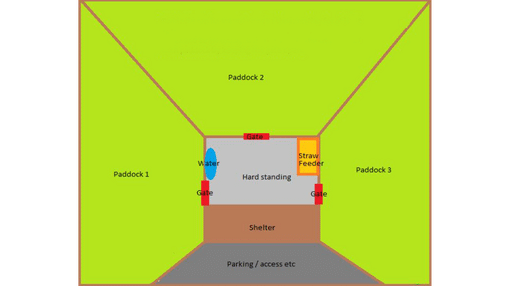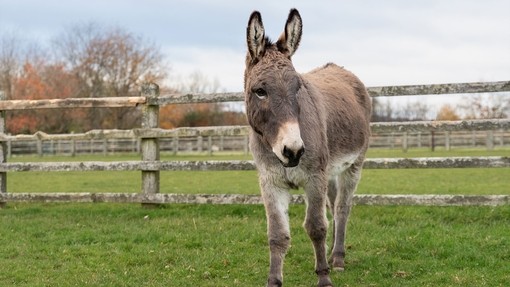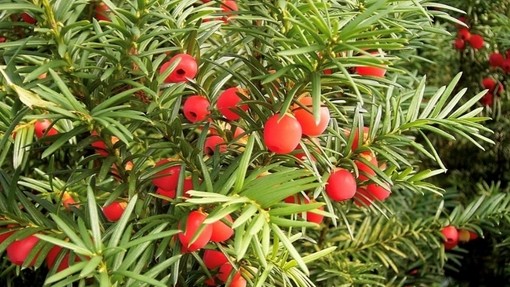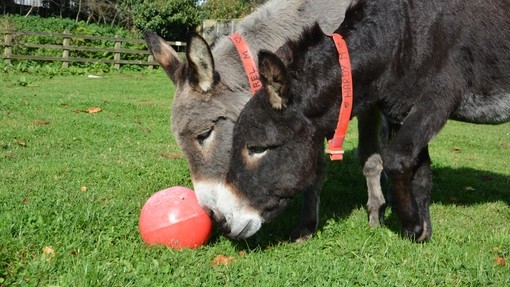Land requirements
A minimum of 0.5 acres per donkey is needed to provide space for grazing, although it is rarely necessary to graze the whole area at once. If more land is available, then the donkeys will benefit from having more room to graze and to move.
You can divide available land into three or more paddocks. Donkeys can be grouped together and paddocks grazed one at a time, allowing time for land to recover and grass to grow.
See our example layout below of how to divide up pasture while maintaining access to all major features. Taking into consideration the area/type of grazing/number of donkeys it may be necessary to strip graze.

Fencing
There are different types of fencing available and not all are suitable for donkeys.
- Fencing needs to keep your donkeys safe and contained but it may also need to be moveable, depending on the setup of your grazing and your pasture management
- Electric fencing is mobile, grazing configuration can be changed and it is relatively cheap. Donkeys will quickly learn to escape if an electric fence is not switched on; they could become tangled up or injured by the fencing. Take care when introducing new animals and remove or fence off any objects with the potential to cause injury. Always use electric fencing according to the manufacturer’s instructions
- Post and rail fencing is secure and, as long as it is properly maintained, is unlikely to cause injury to donkeys. It is expensive to install and not able to be moved temporarily.
Pasture management and rotation
Rest your grassland as this can help to break the lifecycle of some parasites and reduce the risk of being infected with worms.
Each paddock should be rested for at least 12 weeks to reduce the presence of internal parasites on pasture (note that some parasites that will survive for much longer than this in the environment and you will still need to treat for parasites in accordance with your vet’s advice).
Do not be tempted to bring resting paddocks into use too soon.
Use a suitable paddock layout. You can divide your total pasture so that some areas are rested, while maintaining access to areas that donkeys need to get to, such as a water trough. Take into consideration the area of land, the type of grazing and the number of donkeys. Also, consider the variation of activities or landscape available to the donkey within the pasture. For further information about how to provide enrichment, please read our environment enrichment resource.
What else to consider:
- Poo pick paddocks in use at least twice a week, to avoid rank spots developing and to help break the lifecycle of parasitic worms
- Harrowing (spreading manure with farm machinery) can be helpful if the weather is hot and dry. It spreads out parasite eggs, which are then destroyed by degradation. Always move your donkeys out of the area that is due to be harrowed before you start, they could be frightened by farm machinery
- Remove weeds such as nettles, docks and thistles as these may be eaten by your donkeys. Weeds can spread easily and will spoil other areas of grazing. If they overgrow they can be topped or strimmed. Always remove any chopped weeds from the paddock
- Check regularly for ragwort or other poisonous plants. Anything you cannot identify should be considered a potentially poisonous plant and further advice sought. See our poisonous plants and trees guide for more information.
- Re-seed any poached areas in the spring or autumn with a non-rye grass seed mixture. Check that the seed mixture is safe for donkeys. Allow re-seeded areas to establish before introducing donkeys again.
- Avoid overgrazing pasture. Allowing your donkeys to eat grass right down to soil causes damage to land and is not good for your donkey’s health. It may encourage them to ingest alternative plants to grass that could be harmful.




